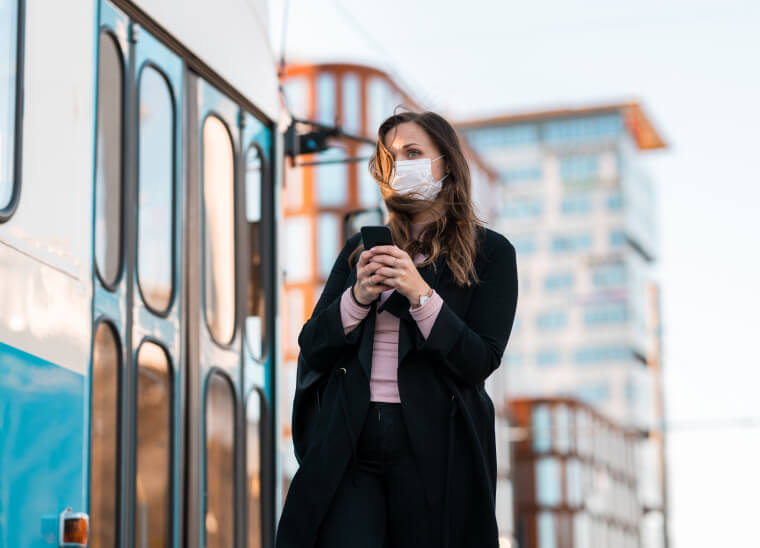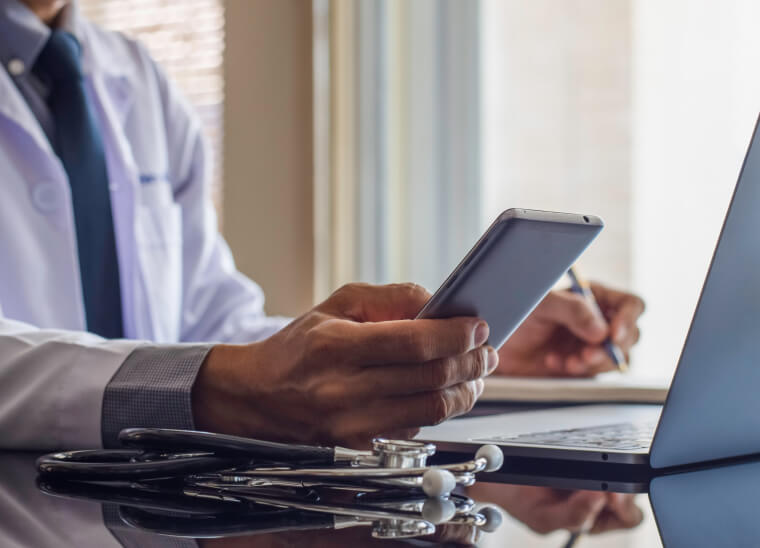As more Americans receive their COVID-19 vaccinations and the CDC guidelines for masking and social distancing continue to ease for people who are fully vaccinated, employees are facing a new pandemic-related hurdle: how to cope with the anxiety of returning to their workplace.
Employers can follow specific steps to help create reopening policies that ease anxiety, but when it comes to the mental health of employees, it’s important to understand where they are.
Dr. Rachelle Scott, Eden’s Director of Psychiatry, outlines what post-vaccination anxiety is and how employees can cope with specific situations as they return to work.
THE ANXIETY EMPLOYEES ARE FEELING IS REAL.
Return-to-work anxiety can stem from a few places. Just as we felt anxious in the first few weeks of the pandemic and then slowly acclimated to working from home and being more restricted, we’re now going through a similar process of reacclimating to in-person activities, which can produce varying levels of anxiety.
Returning to a more normal day-to-day will pose a lot of questions: What are the rules when seeing other people? What are my own personal boundaries? We don’t necessarily know the answers right away, but will start to feel them out and understand them over time. Clear communication and planning ahead will be key. Having a sense of what you are and aren’t comfortable with will help you better communicate with others. Easing into socializing will be essential — don’t feel like you need to jump back into it all at once. Do a little bit each day or each week until you find your sense of balance.
EVEN IF YOU’RE VACCINATED, YOU MAY EXPERIENCE ANXIETY.
Some people may have concerns about contracting COVID-19 — what’s known as a breakthrough infection — despite being vaccinated. If you’ve followed the CDC guidance and received the vaccine, you have done all that has been asked of you. While there are no guarantees, we do know based on the available data that even if a breakthrough infection were to occur, your risk of serious side effects or hospitalization is significantly reduced if you are fully vaccinated.
This is a situation where having reliable sources of information will help to ease anxiety. Having a trusted relationship with a medical provider that you can turn to when you have questions is essential. Ask yourself what sources of information you’re utilizing and how reliable they are.
THERE IS NO TIMELINE FOR ANXIETY.
While levels of anxiety will vary for everyone, there will certainly be an adjustment period for all. The biggest adjustment most of us will make when transitioning from virtual to in-person work environments is centered around boundaries and physical touch. Going from a two-dimensional environment to a three-dimensional environment, or going from using two senses to using all of our senses may be overwhelming for some people. There may be some anxiety about our physical appearances as well.
Whatever the cause of the anxiety may be, recognize that there’s no set answer for how long it may last. Ask yourself: How do you adapt to change or ambiguity, generally? How quickly are those around you adapting to in-person socializing and how much support do you feel you have? Having a sense of these answers may help determine how long feelings of anxiety may last.
HOW TO COPE WITH FEELINGS OF ANXIETY.
First, know that it’s completely normal to have anxiety about returning to work. Make sure you have all the information you need, like knowing what’s expected of you in terms of your working hours. Know what steps your employer has taken to make your physical space safe. Have those plans been clearly communicated? If not, do you know who you can seek clarification from?
Planning ahead and practicing commutes — scheduling that time back into your day — can help us ease back into a normal routine. For many, the return to work is also accompanied by logistical questions if they are caregivers. Consider how responsibilities and roles may shift again as you return to work. Feeling like you have a plan in place at home can help you feel less anxious about returning to work.
Take time to reflect on your boundaries so you can anticipate how you might respond to different social situations at work, like greeting coworkers in the office or grabbing lunch.
One more tip: Returning to work allows us to see our resilience in how we dealt with the past year. Ask yourself: What rituals and activities have you discovered during the pandemic that you’d like to continue? What are some new interests or activities that you’ve been thinking about that you can now engage in? What opportunities do you have to work with new colleagues? Thinking about what we may have gained and what new opportunities may be ahead of us may help to ease anxious thoughts or feelings.
HOW CAN EMPLOYERS HELP?
Make sure you have a plan with contingencies in place before bringing employees back to a physical workplace. Clearly communicate what that plan is and what the expectations are for each employee.
Let your employees know that their safety is your priority. Perhaps that means offering an option to come in for a couple of days at a time before having them come in full-time. Surveys can help you gain a sense of what your employees are or are not comfortable with. Think about how you can create or foster social interactions ahead of time to ease anxiety — create buddy systems, mentorships, or smaller circles that can help build a sense of belonging and trust.
Learn more about how Eden Health can help care for your employees as they return to work (and beyond). Contact us today.
This blog is intended to be informational in nature. The information and other content provided in this blog, or in any linked materials, are not intended and should not be construed as medical advice, nor is the information a substitute for professional medical expertise or treatment.
If you have any questions or concerns, please talk to your Care Team or other healthcare provider. Never disregard professional medical advice or delay in seeking it because of something you have read on this blog or in any linked materials.





